This post's overview:
- 1 Bhutan useful information:
- 2 How to get a visa to travel to Bhutan?
- 3 How to choose a tour to Bhutan? What’s the best agency in Bhutan?
- 4 How much does it cost to travel Bhutan?
- 5 How to get to Bhutan?
- 6 Visiting Bhutan in November: what is the weather like
- 7 What to pack for Bhutan in November & in winter:
- 8 Optimal Itinerary for 4 Days in Bhutan: Punakha, Tiger’s Nest & more
- 9 Summary of the 4-day itinerary for Bhutan in winter:
In this post, I wanted to tell you about our itinerary for 4 days in Bhutan in November visiting Thimphu, Big Buddha, Punakha, Tiger’s Nest & more. I will also share some interesting facts about Bhutan and some useful information, e.g. how to pick a travel agency and your hotels and how to get a visa to Bhutan.
Bhutan is one of the most mysterious countries in the world and it has been on my bucket list for a very long time. Bhutan also became the 86th country that I visited. I was always postponing visiting Bhutan because I thought that it’s very complicated and also because I’ve read somewhere that there is a quota of 100,000 tourists per year (from outside the SAARC countries). However, as it turned out, it’s very easy to visit Bhutan. Let me tell you how!
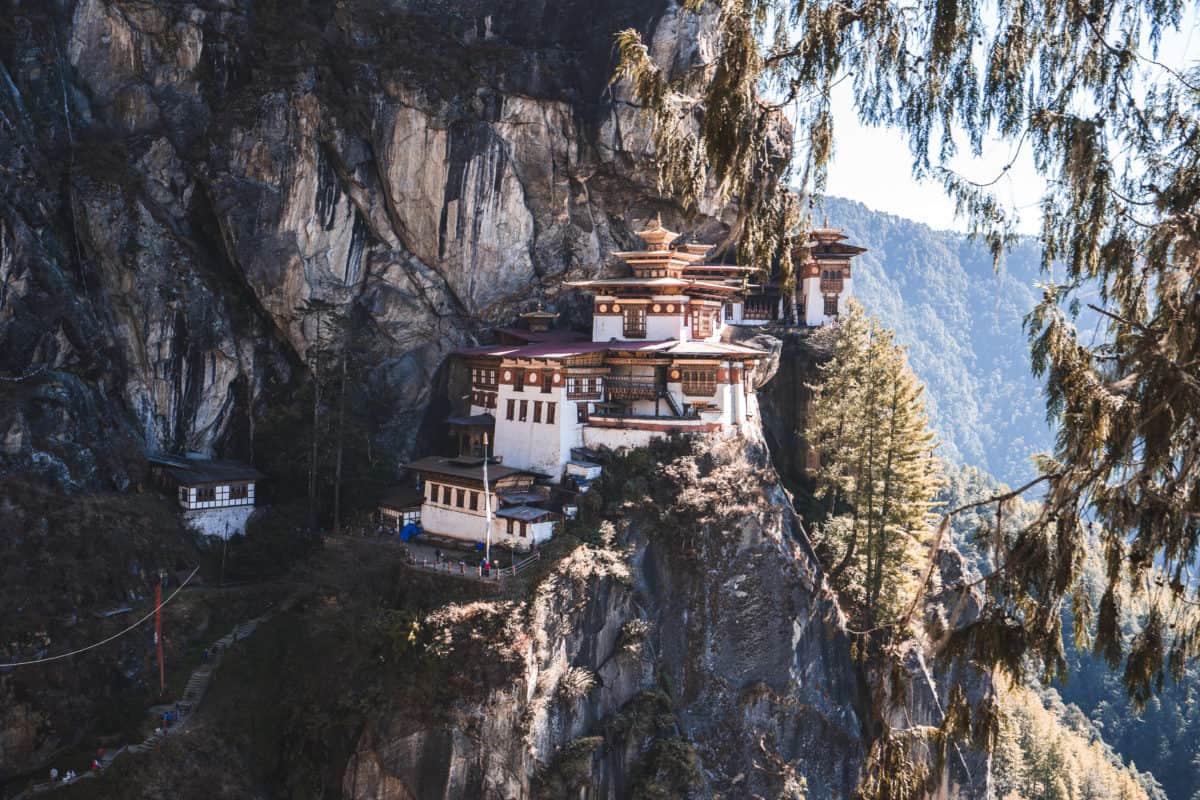
Bhutan useful information:
Population: 800,000
Capital: Thimphu
Currency: Ngultrum equals Indian Rupee; £1 = 93 nu
Language: Dzongkha, but everyone studies English since elementary school + all signs are in English
How to get a visa to travel to Bhutan?
Unless you’re from India or Bangladesh (or other SAARC countries), you need a visa to travel to Bhutan. However, you can’t apply for a visa to Bhutan without buying a tour. Visiting Bhutan is impossible without a tour with an experienced tour guide. However, once you buy a tour, everything is taken care of for you and you don’t need to worry about the visa. Once you made the payment for your tour in full, your chosen agency will apply for a visa for you. You don’t need to send your photos or your passport anywhere – a scan of your passport is enough – and you usually send it over once you buy a tour.
Your tour agency will also sort out the flight tickets for you.
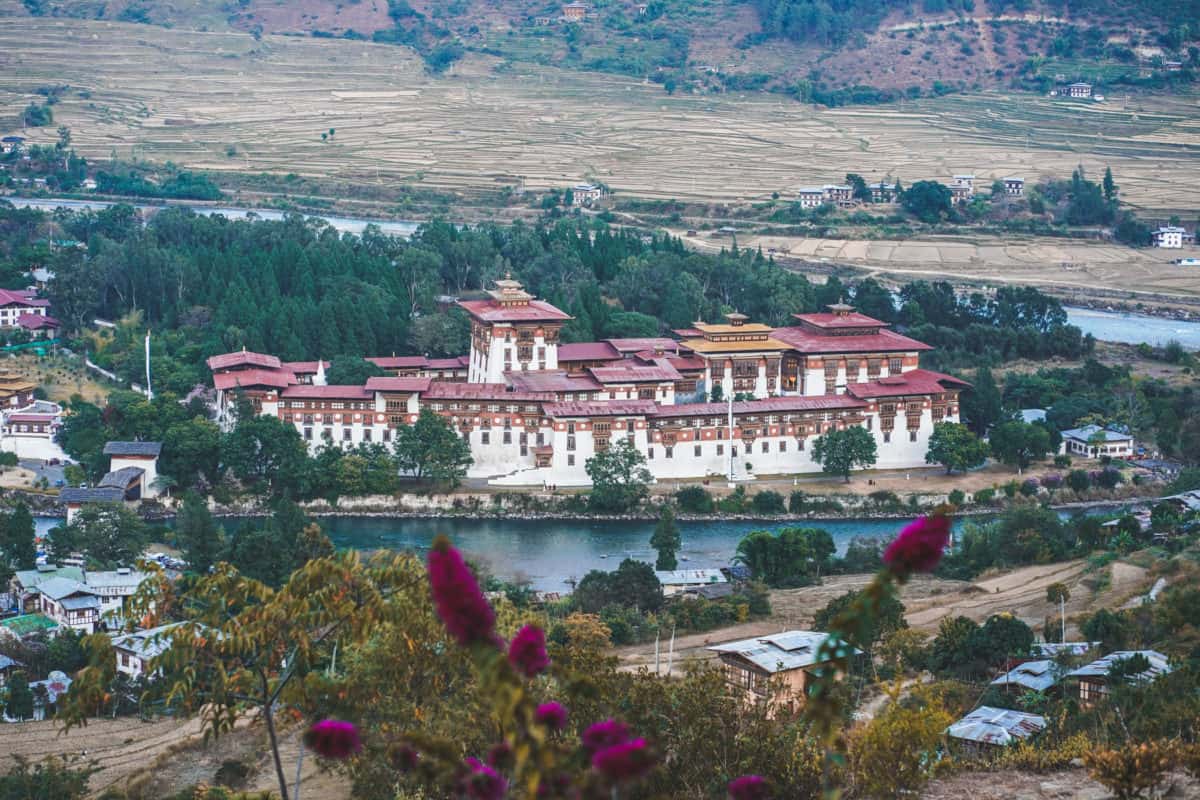
How to choose a tour to Bhutan? What’s the best agency in Bhutan?
If you’re wondering, how to choose a tour to Bhutan, it depends on what do you want to see and how many days do you want to spend in Bhutan. The most popular tours are usually 4-5 days and include the main highlights. We picked a 4-day tour (5-day if you count the departure day) and were happy with our itinerary. 4-day tours are also the most affordable ones because, in Bhutan, you pay a daily fee of at least $200 per day.
We picked Druk Asia as our tour operator and were happy with how the tour has turned out. The communication was prompt and they also answered all our questions very fast. Our guide and driver were amazing and we also had a brand new 4×4 car in which we travelled around Bhutan. We also stayed in amazing hotels that were carefully chosen for us. Our guide also told us about the best photo locations and waited for us to take photos (and we did take many because Bhutan is very photogenic and Instagrammable).
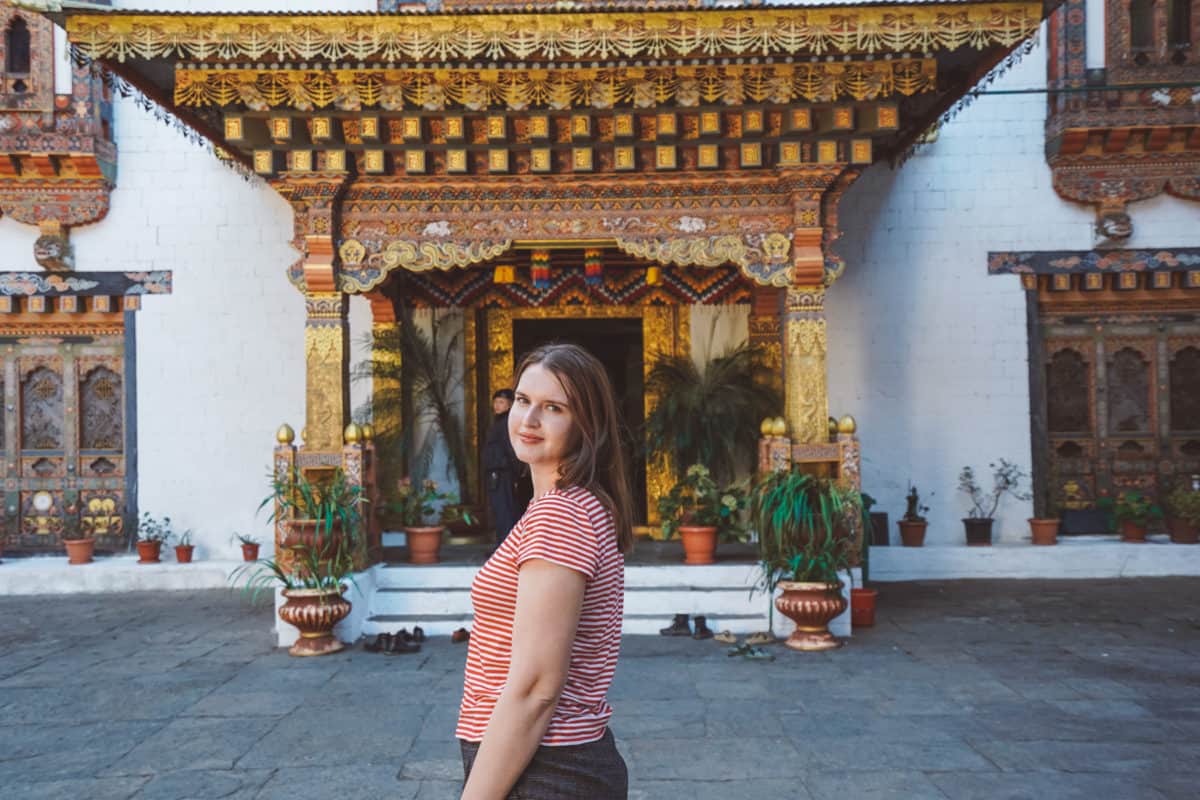
How much does it cost to travel Bhutan?
Bhutan is certainly not the cheapest country to travel to, as for non-SAARC travellers, there is a mandatory tour fee of USD 200 during the low season (March – June) and USD 250 during the high season (Sept – December). On top of that, if you’re travelling alone, you’ll be paying $40 per day as a solo traveller fee and if you’re a couple, you pay $30 each per day. If you’re 3 or more, you don’t pay additional fees.
If you’re below 25 and have a valid student ID, you get a 25% discount off the daily fee. Kids also only get charged 50% of the fee depending on the age. If you’re travelling as a large group of 8 or more, you get a 50% discount and groups of 16 or more don’t need to pay a daily fee at all.
You don’t need to pay anything at all on top of the daily fee – it includes a driver, a guide, a vehicle for all the time of your trip, all the meals, hotels and entrances to the landmarks. If you decided to buy alcohol in the restaurants, souvenirs and tip your driver and a guide (I’ve read somewhere that $10-15 per day for your guide and $6-10 per day for your guide is a good tip), that’s what you need to bring some additional money for.
Also, if you want to upgrade to 4* or 5* hotels, you need to pay more than $250 per day for your trip.
If you’re from the SAARC countries, you can stay in affordable hotels and travel Bhutan on a budget. An average meal costs $2-3 per person and hotels also depend on your budget, but there are all sorts of hotels in Bhutan, from very cheap (like Nirvana Inn) to very expensive (like Taj).
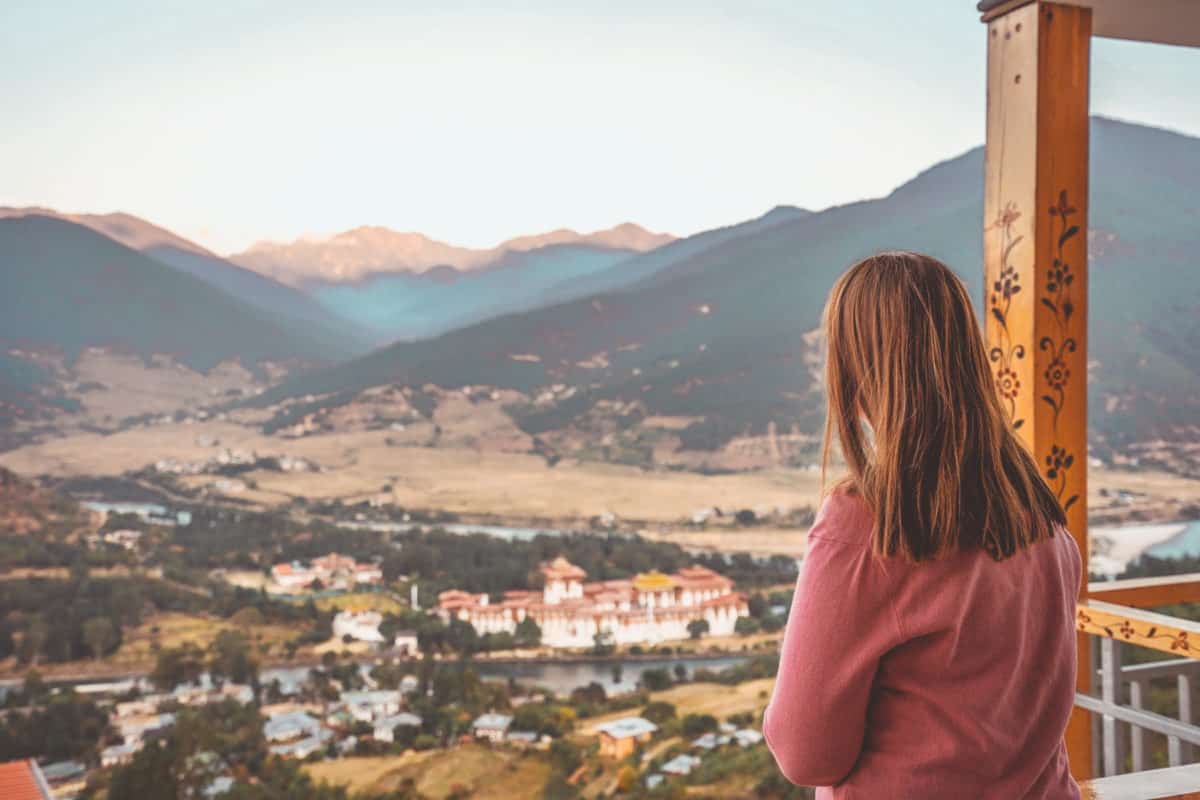
How to get to Bhutan?
How to get to Bhutan? Well, Bhutan is connected to 5 countries and 11 cities by air. You can fly to Bhutan from India, Nepal, Bangladesh, Thailand and Singapore. I recommend flying from Kathmandu, as we did because you’ll see Mt. Everest from the plane window super close (tip: you need to sit on the left side, e.g. Seats A/B to see Mt. Everest on the way to Bhutan). The tickets will be sorted by the tour operator, so you don’t need to worry about that.
Visiting Bhutan in November: what is the weather like
Alright, November is still the high season in Bhutan, so you pay the higher fee of $250 pp per day. However, around the end of November, it gets quite cold in Bhutan and hence, fewer people visit the country. December is also high season, however, Bhutan in December is not crowded at all. We visited Bhutan at the end of November and were puzzled, which clothes to bring with us.
For example, the weather forecast promised around 7C during the day in Paro and Thimphu and around 18 degrees in Punakha. However, the night temperatures in Paro and Thimphu were around -3-7C, which sounded cold. However, we thought that we will be out during the day and will sleep at a warm hotel at hight, so we shouldn’t worry about the subzero temperatures at night.
That wasn’t the case. It was pretty warm during the day even in Paro and Thimphu – I just wore a T-shirt with a hoodie and a scarf. In Punakha, I wore a T-shirt during the day. However, in the mornings and the evenings, we needed warm boots, hats and warm jacket in all the places. The coldest spots were, however, the hotels. There was no central heating or any sort of heating (apart from small electric heaters) in any of the hotels we stayed at, so we regretted that we didn’t bring very warm PJ and sleeping hats. Make sure to double-check it with Druk Asia or your tour operator before coming to Bhutan in November and checking, how well heated were the hotels.
What to pack for Bhutan in November & in winter:
So if you decided to come to Bhutan mid- or late November or in winter like we did, I recommend packing the following items:
- A couple of T-shirts
- Fleece hoodie
- Warm parka
- Hiking jacket
- Sweater
- Hiking boots
- Sneakers
- Hat
- Scarf
- Gloves
- Warm PJ set
- Sleeping hat
- Earplugs
I hope these tips on how to pick a tour in Bhutan and how to get a visa to Bhutan were useful for you. Without further ado, let’s get started with the optimal itinerary for 4 days in Bhutan with Druk Asia visiting Punakha, Tiger’s Nest and much more!
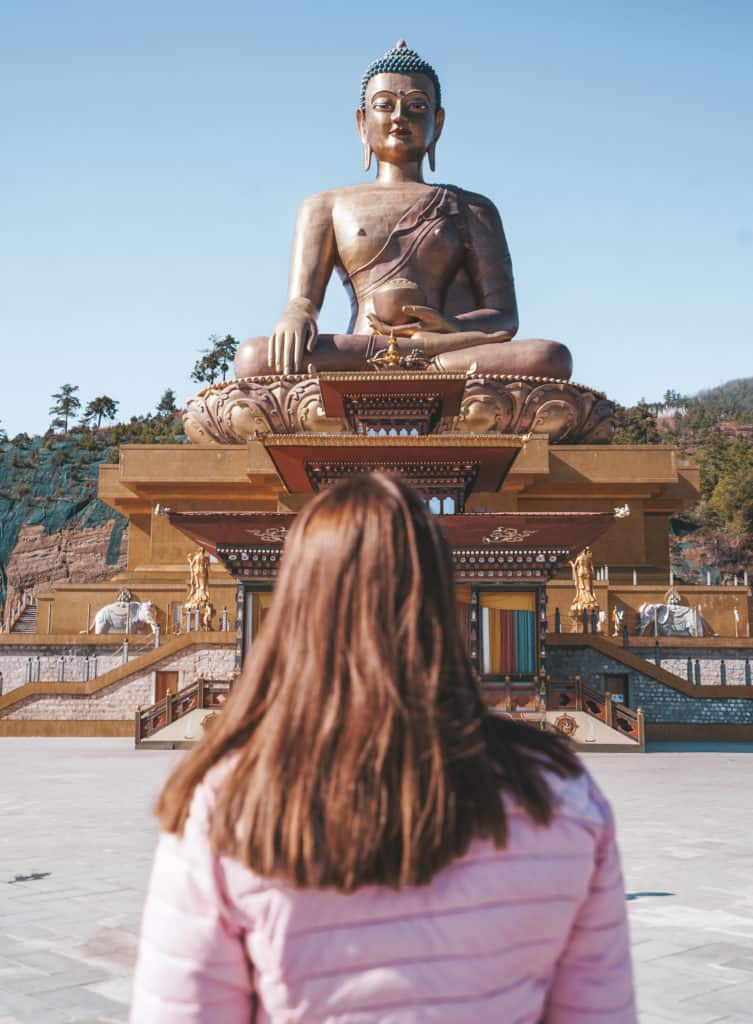
Optimal Itinerary for 4 Days in Bhutan: Punakha, Tiger’s Nest & more
Day 1: Thimphu and Big Buddha
Your first day in Bhutan solely depends on your arrival time. We were flying from Nepal with Drukair and as our plane was delayed by 1 hour due to the traffic conditions in Kathmandu, we arrived at Thimpu when it was already 4 pm. In November, it gets dark around 5 pm in Bhutan. The only International airport in Bhutan is located in Paro – that’s because Paro valley is broader than Thimphu valley and it’s easier for the airplanes to land. Still, Paro airport is very tricky and it takes a lot of skills to land at Paro airport. Only 10-12 pilots are allowed to fly to Paro.
Paro airport is located circa 1.5 hours driving from Thimphu, our destination for the first out of 4 days in Bhutan. If you arrive early enough, you’ll be able to visit the Big Buddha at the Buddha Point – a relatively new huge statue of Buddha with a stunning museum inside. The construction of Buddha started in 2008 to commemorate two very important events: the 100 years of Monarchy in Bhutan and the coronation of the 5th King of Bhutan.
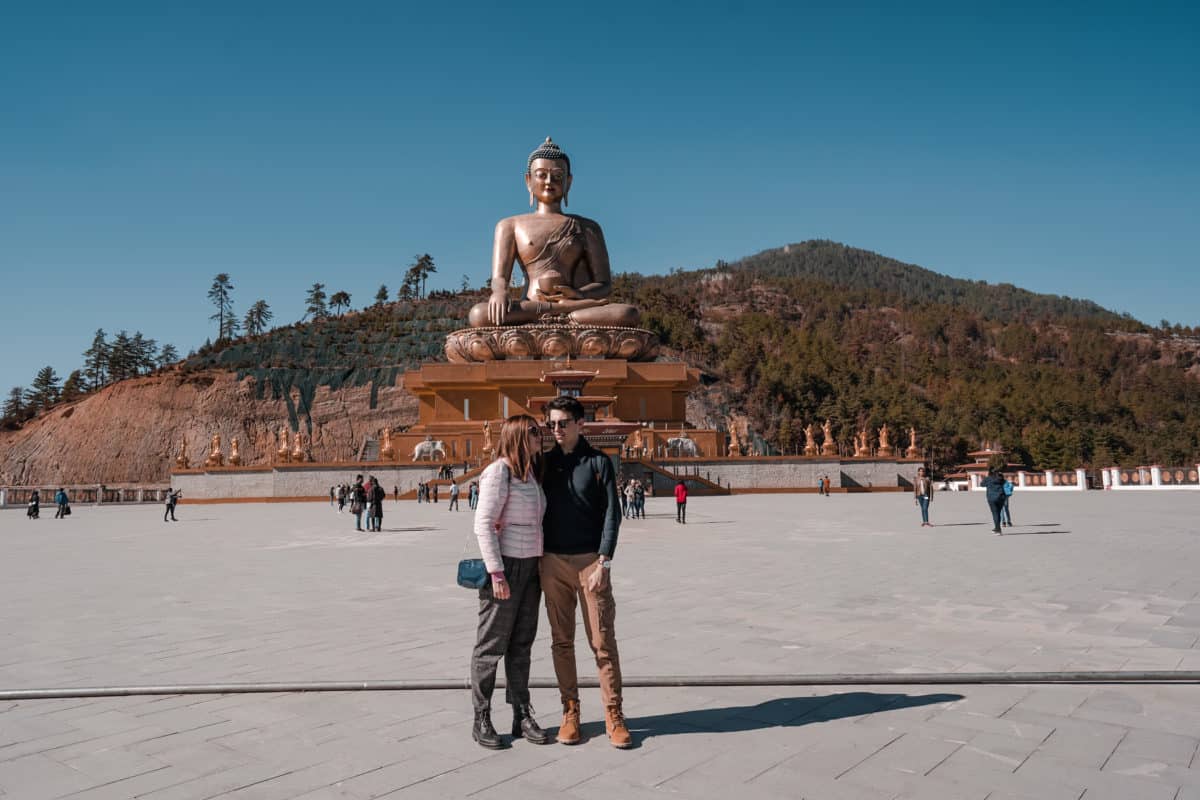
In Paro, we stayed at the Namgay Heritage Hotel located 8-10 minutes walking from the city centre of Thimphu. The hotel was very beautiful and the food was great as well. The only downside is that there are many stray dogs on the streets that bark at night, so if you’re bothered by that – bring earplugs and you’ll sleep like a baby. For most people, it’s not a problem.
Before dinner, we managed to get to the city centre of Thimphu to see life in the Capital of Bhutan. We found Thimphu to be full of life: people were walking around, visiting Karaoke bars and shops, chilling at the Clock square and visiting local cafes. Prices in Thimphu were also quite low – if you decide to eat in the city instead of the buffet at your hotel, you can do it as well – for as low as $4-5 per person!
Day 2: Dochula Pass, Chhimi Lhakhang and Punakha
On the second day in Bhutan, we woke up around 7:45 am, had breakfast at our hotel and started our tour at 9 am. Our first stop was the beautiful panorama of the Trashi Chhoe Dzong – the Fortress of Glorious Religion. Even though the photos were taken against the sun, the panorama was still gorgeous.
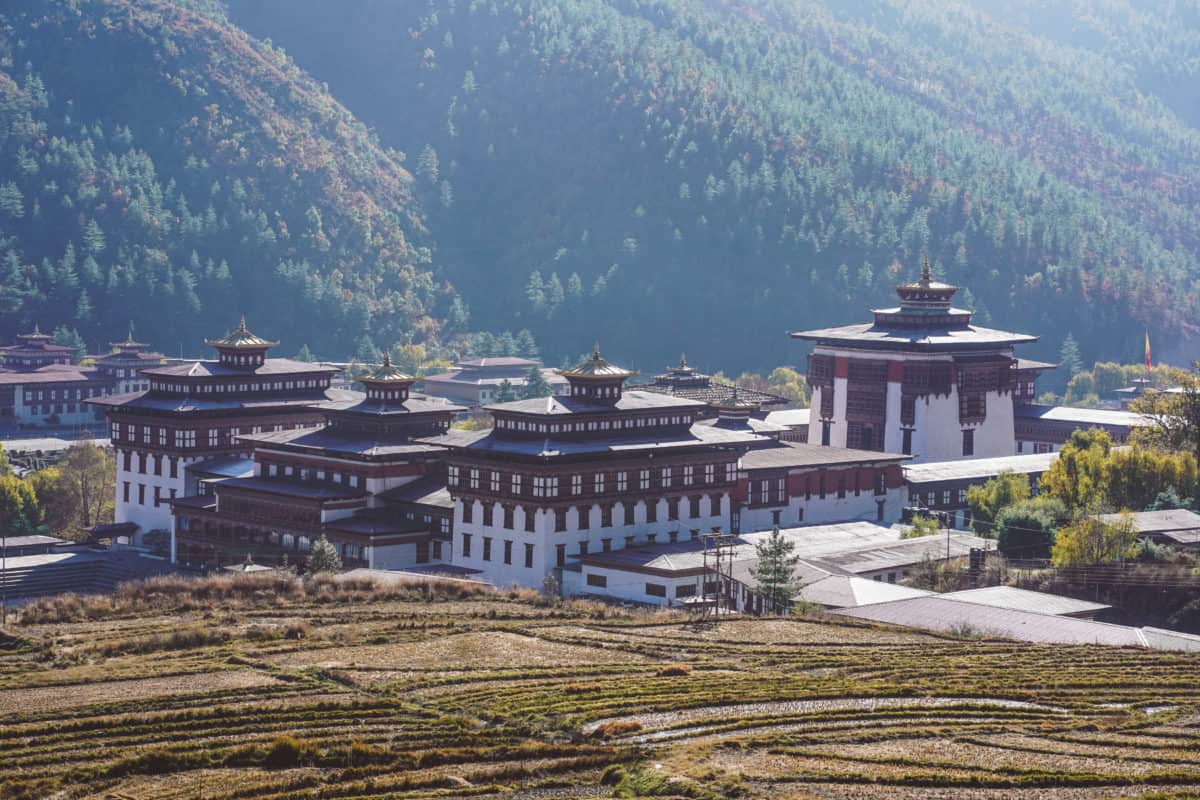
Then, we went to visit the Chorten National Memorial – a beautiful stupa in the heart of Thimphu. It’s a very busy stupa, where locals come to pray before going to work and also bring their elderly relatives to socialise.
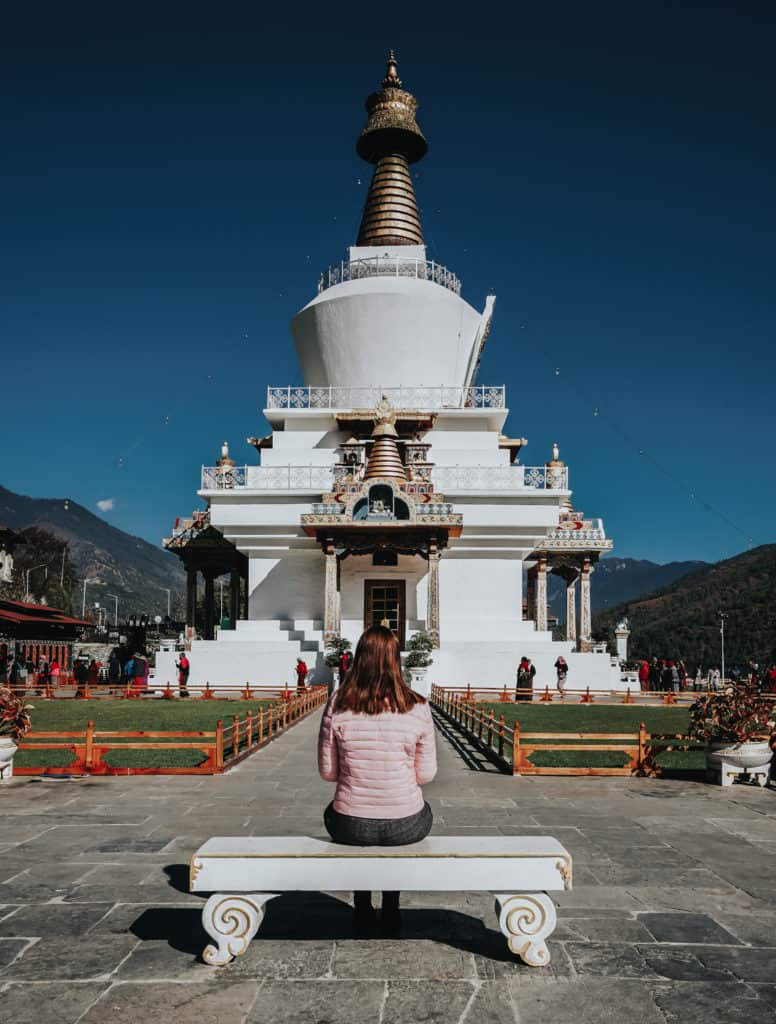
After that, we drove to the stunning Dochula Pass, from where you can see the views to the Himalayas and 108 stupas built in memory of the fallen in the war with India. The roads in Bhutan are very windy, as Bhutan is a mountainous country, so make sure to bring some ginger candies or anti-sickness pills if you tend to get motion-sick in the car. I do, so we had to buy some in the local pharmacy. On some days, you’ll spend up to 4 hours in the car, so it’s really important that you don’t feel bad!
There is a cafe, where you can sit for a tea and a set of cookies and if you’re hungry, you can also eat there, however, your lunch will be in about 45 minutes anyway.
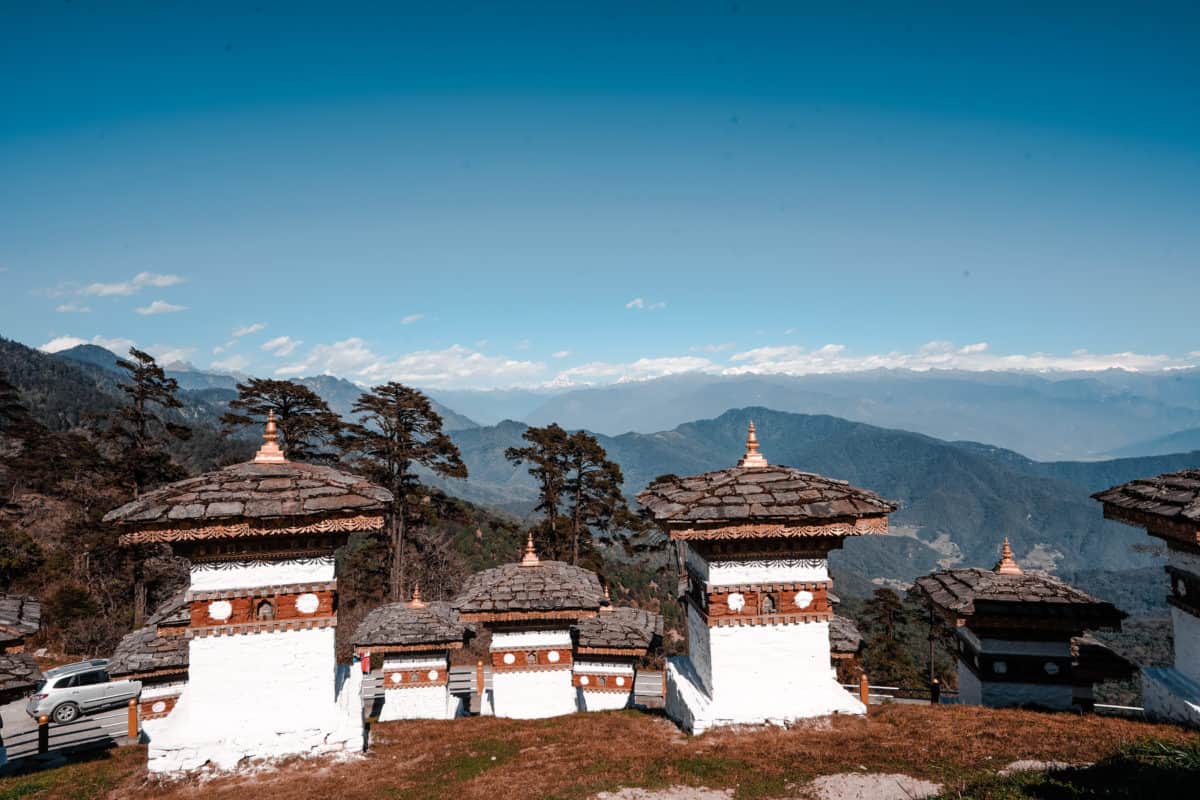
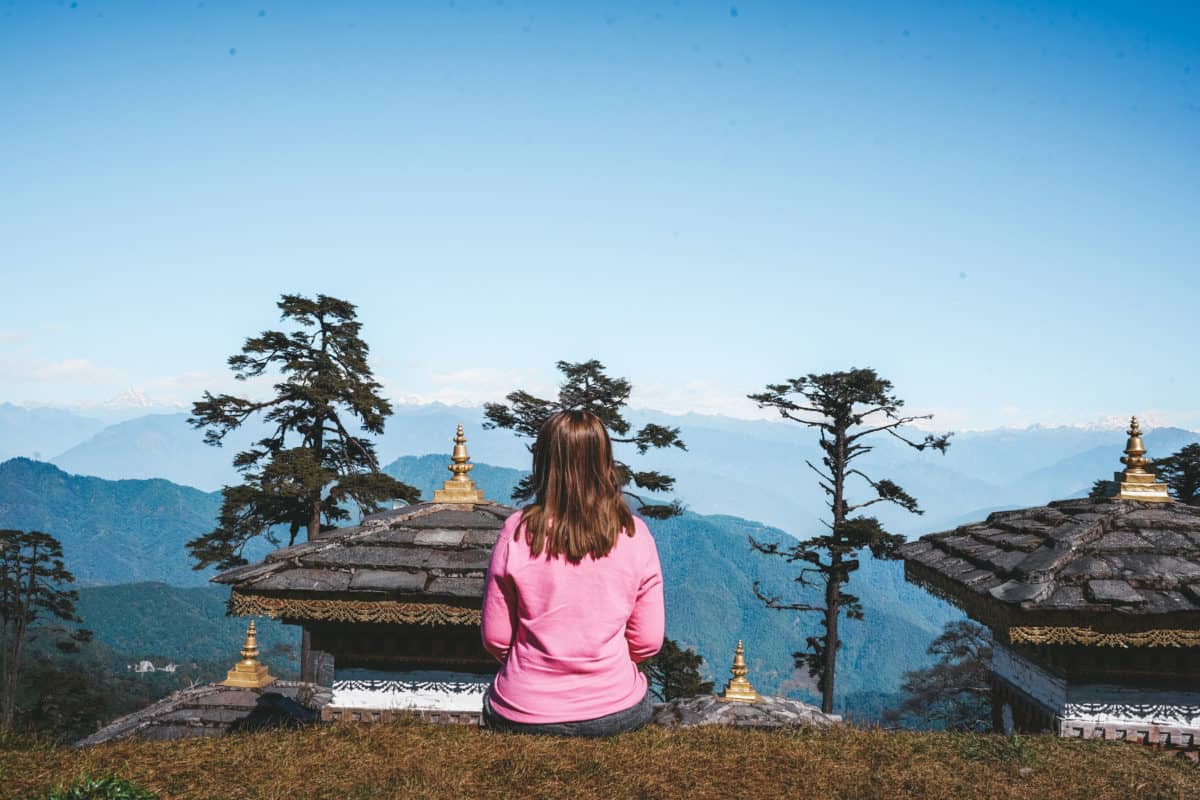
Chhimi Lhakhang – the temple of the Divine Madman.
After lunch, you will be heading to the Chhimi Lhakhang – a temple of “divine madman” built in 1499. This area of Bhutan where the monastery is located is also famous for the images of phalluses drawn on the walls of many houses. That’s because the saint, “divine madman”, encouraged local people to draw phalluses on the walls and carve them from wood to drive away gossip and the evil eye. This temple is also known as the fertility temple – many couples come there to pray to be able to have children. There is even a photo album of couples, who managed to conceive after visiting this temple.
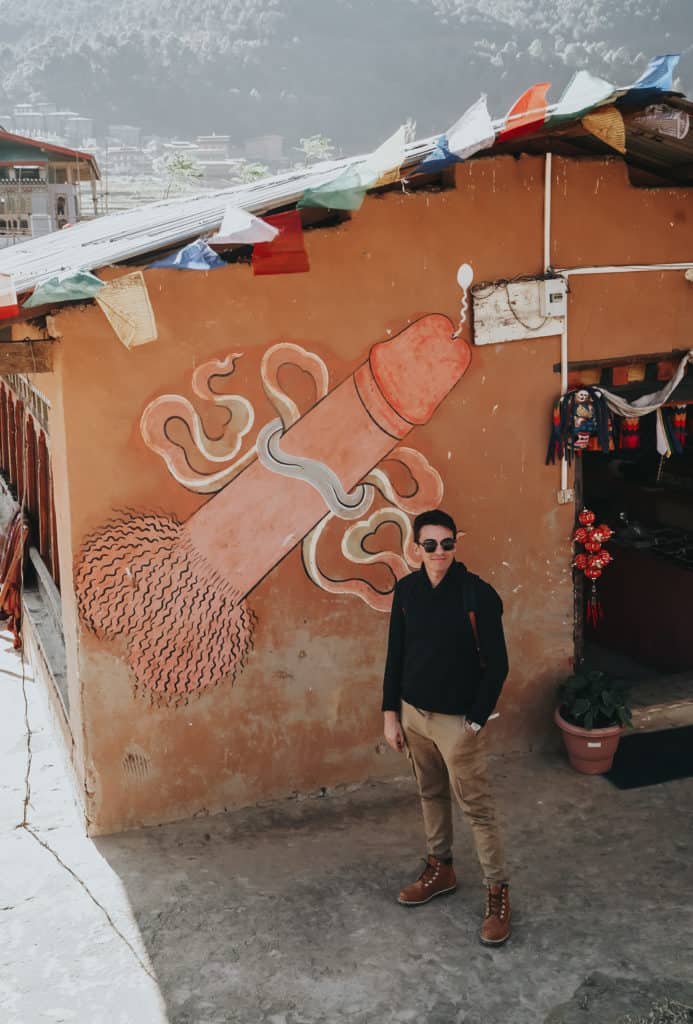
Punakha Dzong – one of the most important dzongs in Bhutan
The last destination of our second day in Bhutan was Punakha dzong – one of the most beautiful and important dzongs in Bhutan. This dzong was completed in 1638 and it’s often visited by the King of Bhutan. The dzong has 6 floors and you need to climb the stairs to enter the fortress. The architecture is stunning from both inside and outside. Dzongs are only common in Bhutan and some Tibetan parts of India, so it was nothing like the fortresses we’ve seen before. Punakha Dzong was also the place, where the government used to reside before the capital was moved to Thimphu.
We spent our night in a resort (Zhingham resort) in Punakha – it had a stunning view over the Dzong and it was even more impressive when we woke up and there was no visibility at all – the cloud got down so low that it covered the entire valley.
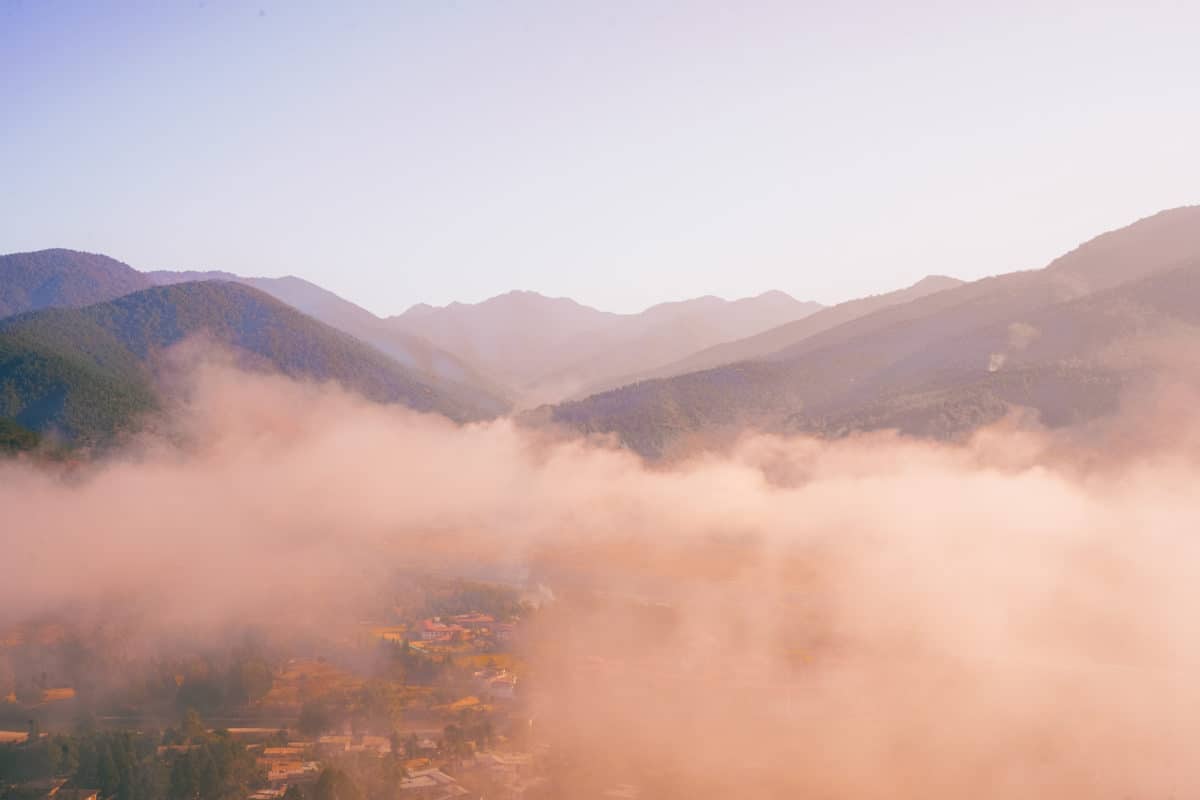
Day 3: Going to Paro, visiting Paro Dzong and Kuichu Lhakhang.
Our third day in Bhutan started with a lot of driving – we had to drive to Paro, passing Thimphu on the way. As the drive was over 3 hours, we agreed to stop in one of the local cafes and our guide and our driver brought us to one of the roadside cafes. There we managed to try some local snacks and specialities e.g. dried fish and baked chilli with cheese. These snacks were very unique – we loved them and stopping in a non-touristy place was also a great experience.
Once we reached Paro, we had lunch in one of the local hotels and then went to explore Paro Dzong – the most famous and prominent building in Paro. Paro Dzong is a large monastery and a fortress and it was built in the 15th century. Paro Dzong looked somewhat similar to Punakha dzong, however, it was nicer to explore it, as it was almost empty and we had the entire dzong just for us.
Afterwards, we went to Kuichu Lhakhang – the oldest monastery in Bhutan. It was also very special for us, as we managed to witness the prayer ceremony of the monks. Unfortunately, it’s strictly prohibited to take any photos or videos inside the prayer rooms, so I can’t share what we witnessed with you.
We spent the night in the Metta resort – unfortunately, we had a very and experience in the resort during the two nights we stayed there and we would never recommend this hotel to anyone. I’m certain that this resort shouldn’t be allowed to host tourists during the wintertime, as it’s not prepared for the cold. The temperature in our first room was around 10 degrees at night and there was no hot or cold water.
We asked to change the room and the second room was warmer due to 2 heaters switched on, but still had no water and had paper-thin walls and hundreds of dogs outside keeping us awake all night (despite using air plugs). The heaters were also making loud noises and not sure what was the roof made of.
Overall, this was one of the worst stays we had in our entire lives (having travelled to 89 countries and staying in all kinds of places). Make sure to chat with Druk Asia and ask to replace Metta resort for a different hotel, as I strongly recommend you not to stay there.
Day 4 of 4 days in Bhutan: Hiking to Paro Taktsang (Tiger’s Nest) and lunching in a local farmhouse
Our last day in Bhutan was our favourite! Despite waking up with sore throat (thanks to Metta resort), we managed to enjoy the day and hike to the Tiger’s Nest.
Hiking to the Tiger’s Nest in November / in winter
We left our hotel around 8 am and started ascending around 8:40 am. The hike to Tiger’s Nest is not the easiest, however, you have the luxury of hiking at your own pace. We made many stops to take photos – the views from the hike were incredible. The hike is also quite busy – many people start hiking in the morning, however, there is enough space for everyone. As we were hiking Tiger’s Nest in late November, it was very cold in the morning and got sort of warm during the day. Make sure to bring many layers of clothes – as some point, you might be even trekking in a T-shirt, but inside the monastery, you will need 2 or 3 layers of clothes, as it’s very high in the mountains at. 3,125 km above sea level. You will, however, only hike about 600m up.
Halfway through the hike, there is a cafe, where you can have tea with biscuits or even lunch (but I recommend having it on the way back). Overall, we spent around 4.5 hours going there and back and over 1100 calories (according to my Apple Watch).
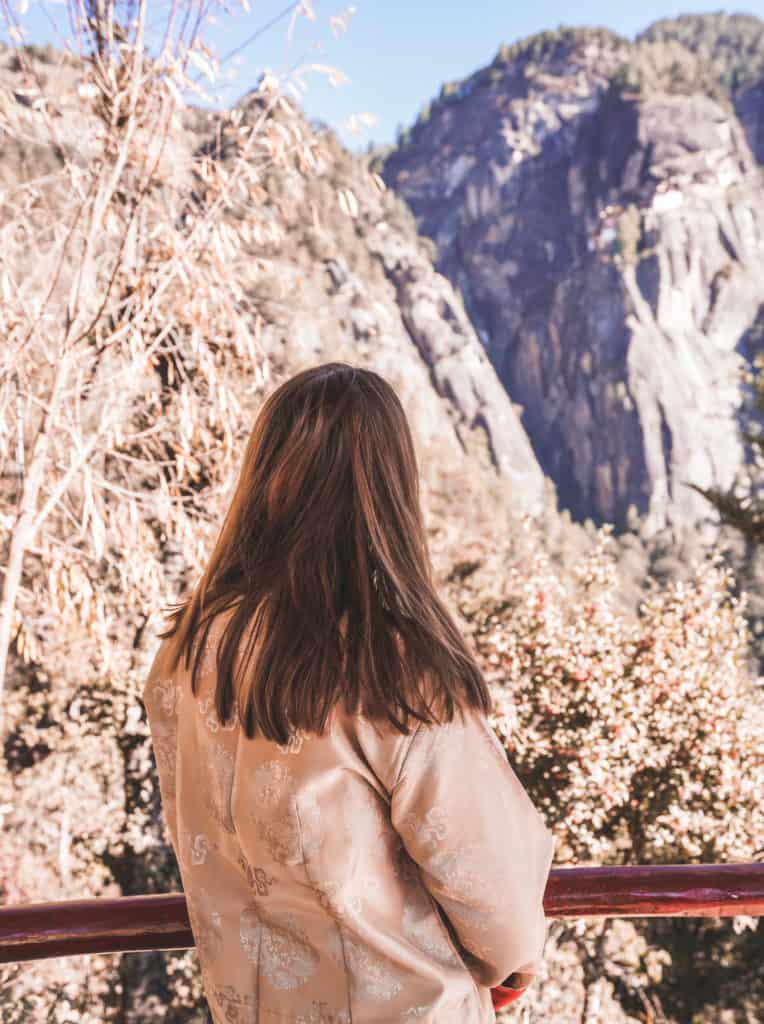
Paro Taktsang is incredible. There are plenty of viewpoints along the hike and the view from each of them is very different. Paro Taktsang was built in 1692 around the famous cave (Taktsang Senge Samdup cave), where, according to the legend, Guru Rinpoche meditated for 3 years, 3 months, 3 weeks, 3 days and 3 hours. Tiger’s Nest is undoubtedly the most famous building in Bhutan and it’s a must for everyone visiting this beautiful country.
Lunching at a local farmhouse
Another highlight of our trip was lunch at a local farmhouse, where we managed to meet the owner of the farmhouse and try local homemade food. Food in Bhutan is amazing, however, it’s very spicy, especially the traditional chilli-based dishes. However, at the farmhouse, there was a wide range of dishes, both spicy and not spicy and at the hotels, we usually had a lot of Western and Indian options as well, so everybody can find something they like eating in Bhutan.
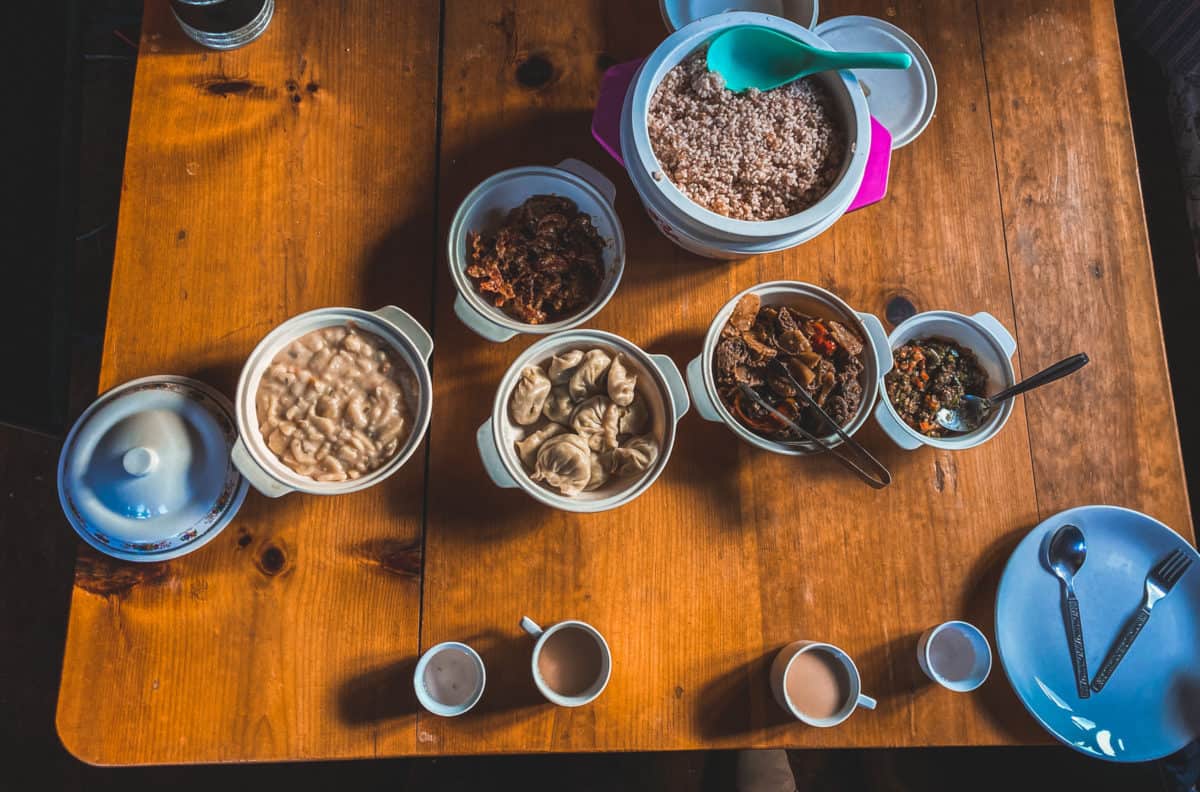
Finally, in the evening, we went to see the main street of Paro. Paro is a very touristic place and almost every single shop on the main avenue is a souvenir shop. If you’re looking to buy souvenirs from Bhutan, Paro is your best bet, as there are so many shops, that you will surely find something you like.
Summary of the 4-day itinerary for Bhutan in winter:
On the fifth day in Bhutan, we woke up early and headed to the airport. If your flight departs early, you don’t pay the $200 tour fee in Bhutan, as you can’t see anything at all.
Overall, we were really happy that we came to Bhutan and saw this beautiful country with our own eyes. Our expectations were very different from the reality – not better or worse, we just expected something completely different and we’re happy that we visited the main highlights of Bhutan. Our tour was well organised and our guide and driver were very knowledgeable and friendly – we now follow each other on Instagram.
Therefore, I would recommend Druk Asia and our 4-day itinerary for Bhutan in November – we liked all the places we visited.
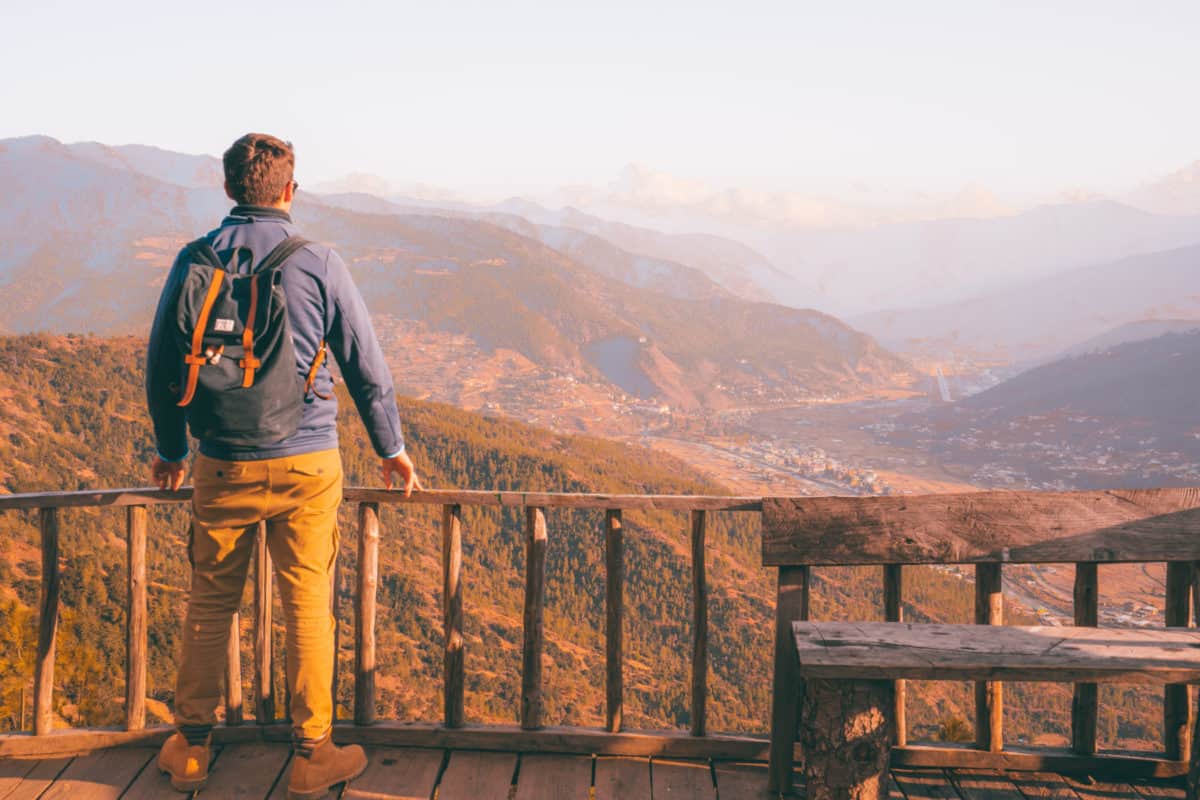
Disclaimer: as bloggers, we collaborated with Druk Asia for a discount for our tour to Bhutan. However, our opinions are, as always, our own!
You might be also interested in:
4 days in North of India: the Golden Triangle
7 days in Japan: from Tokyo to Nagoya
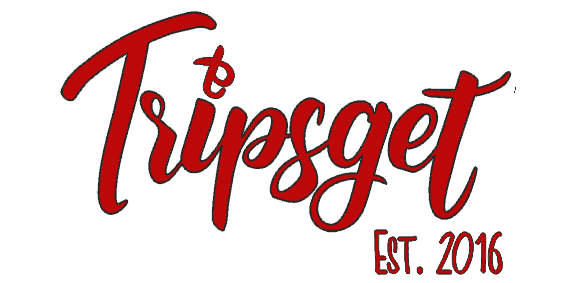
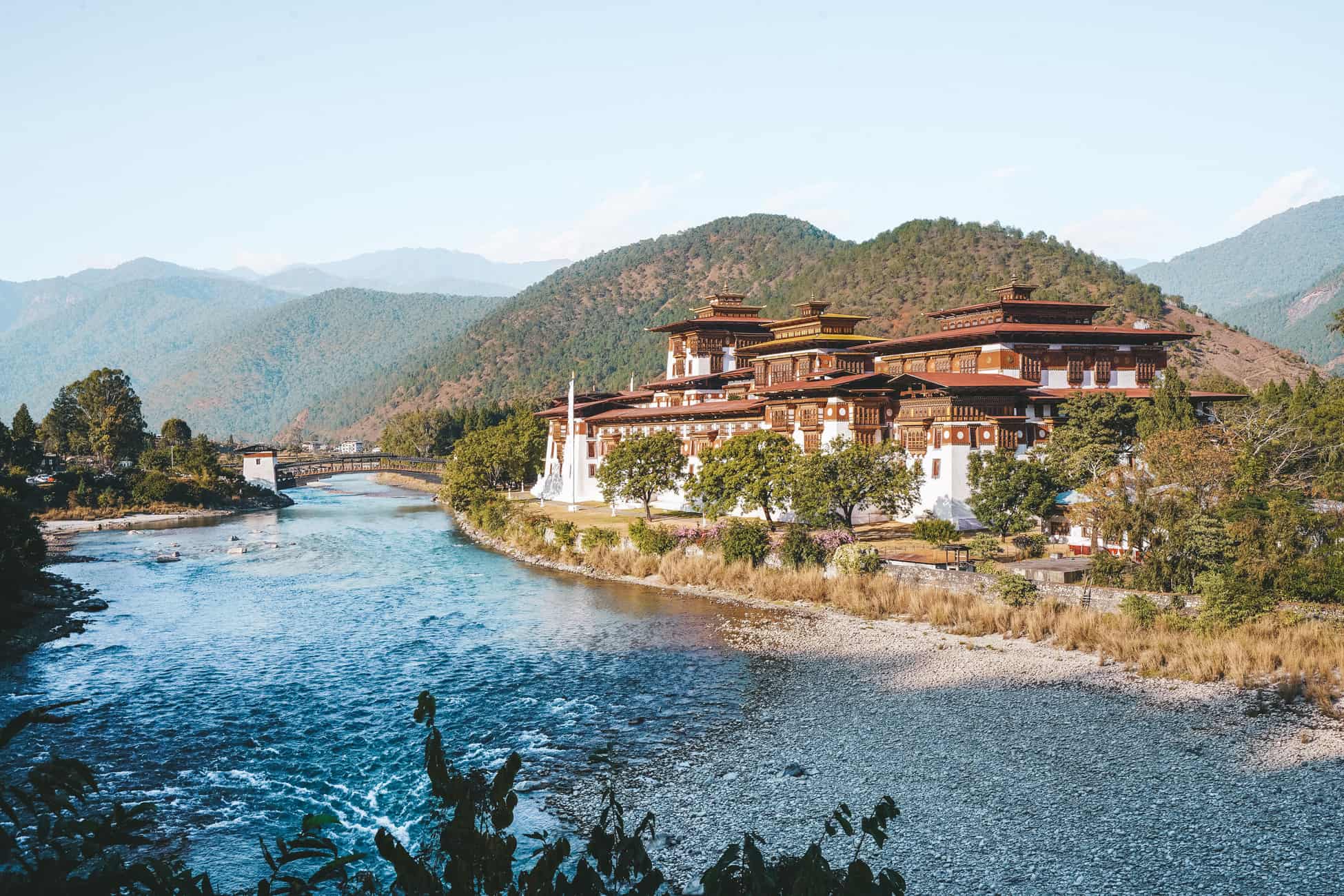
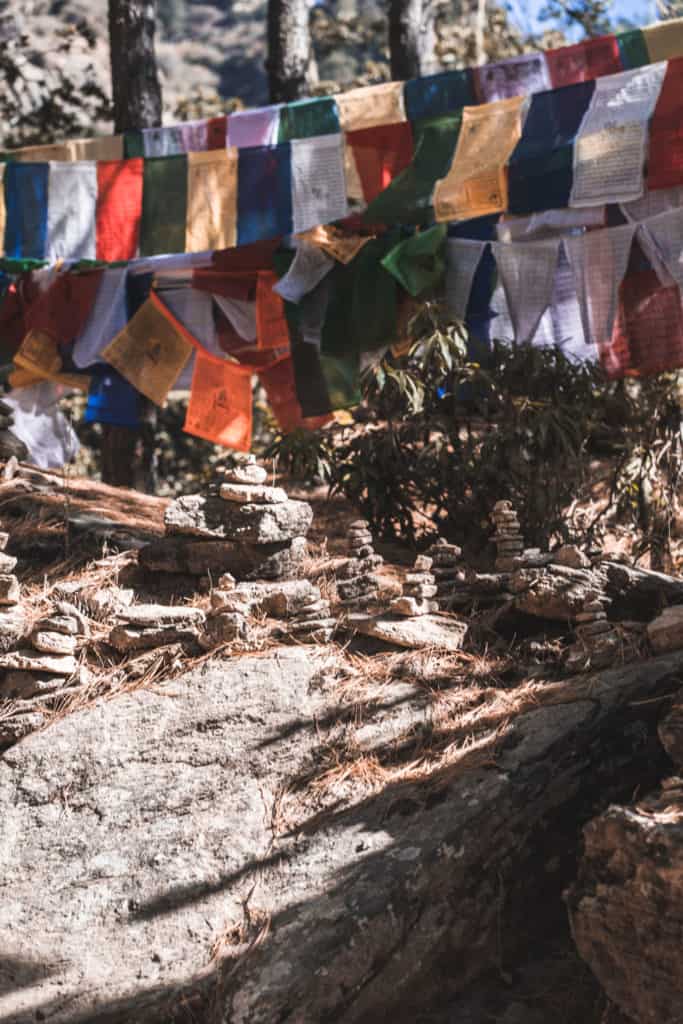
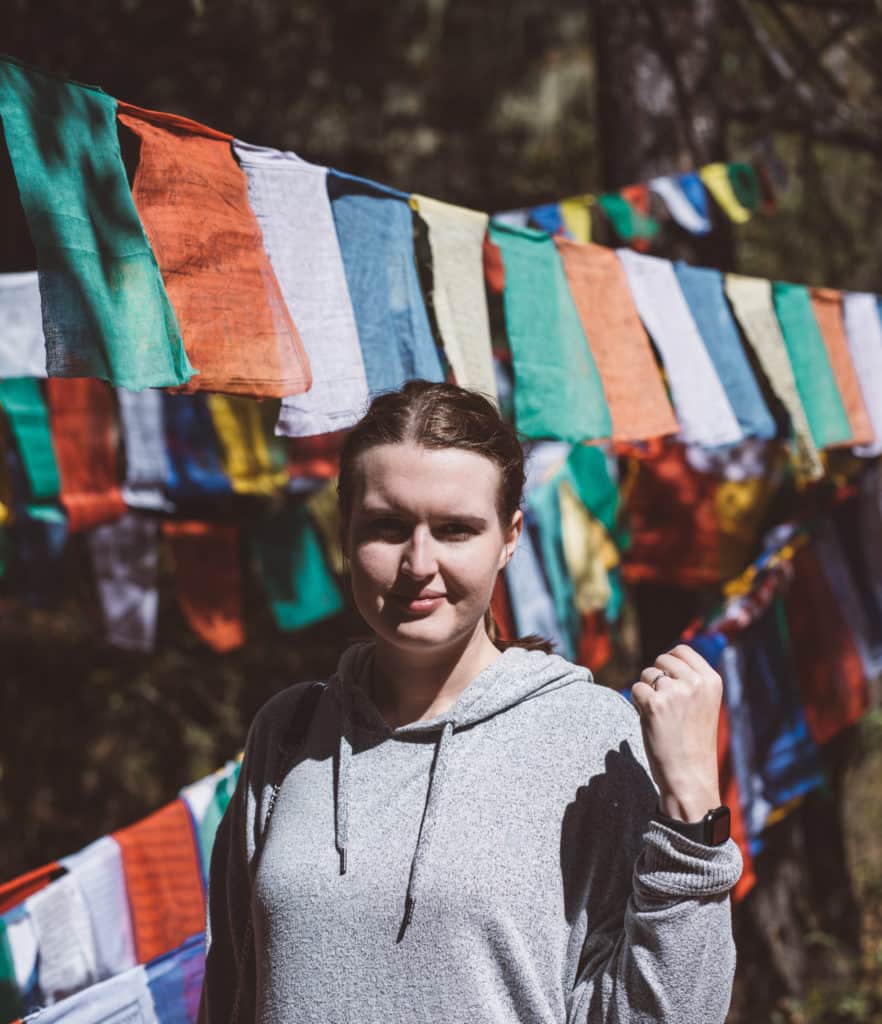
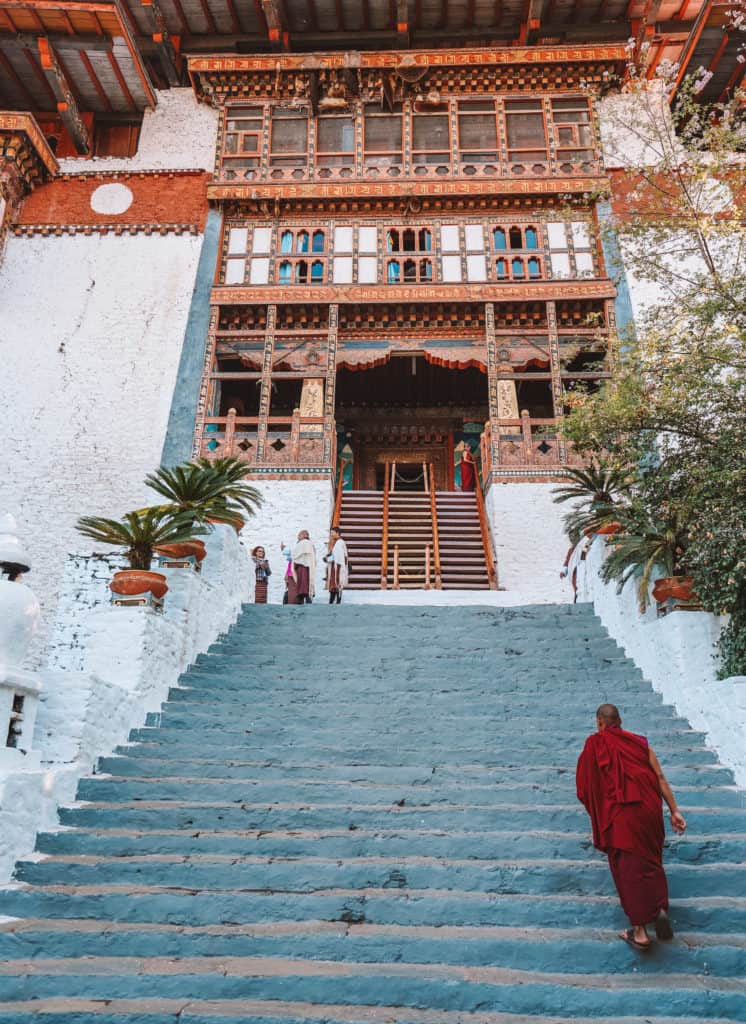
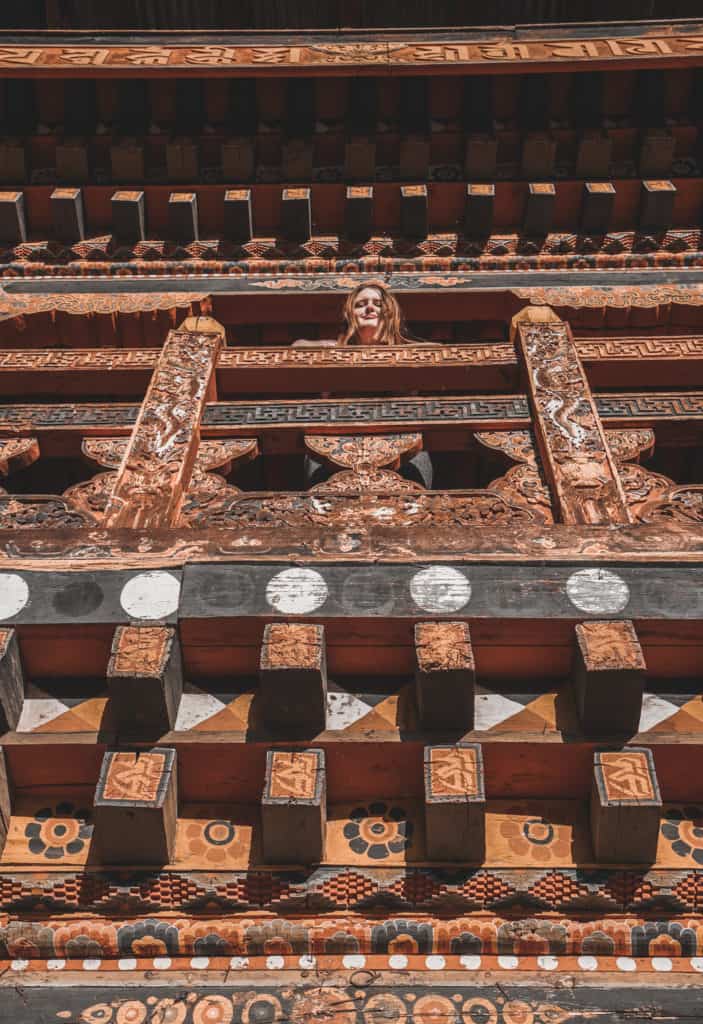
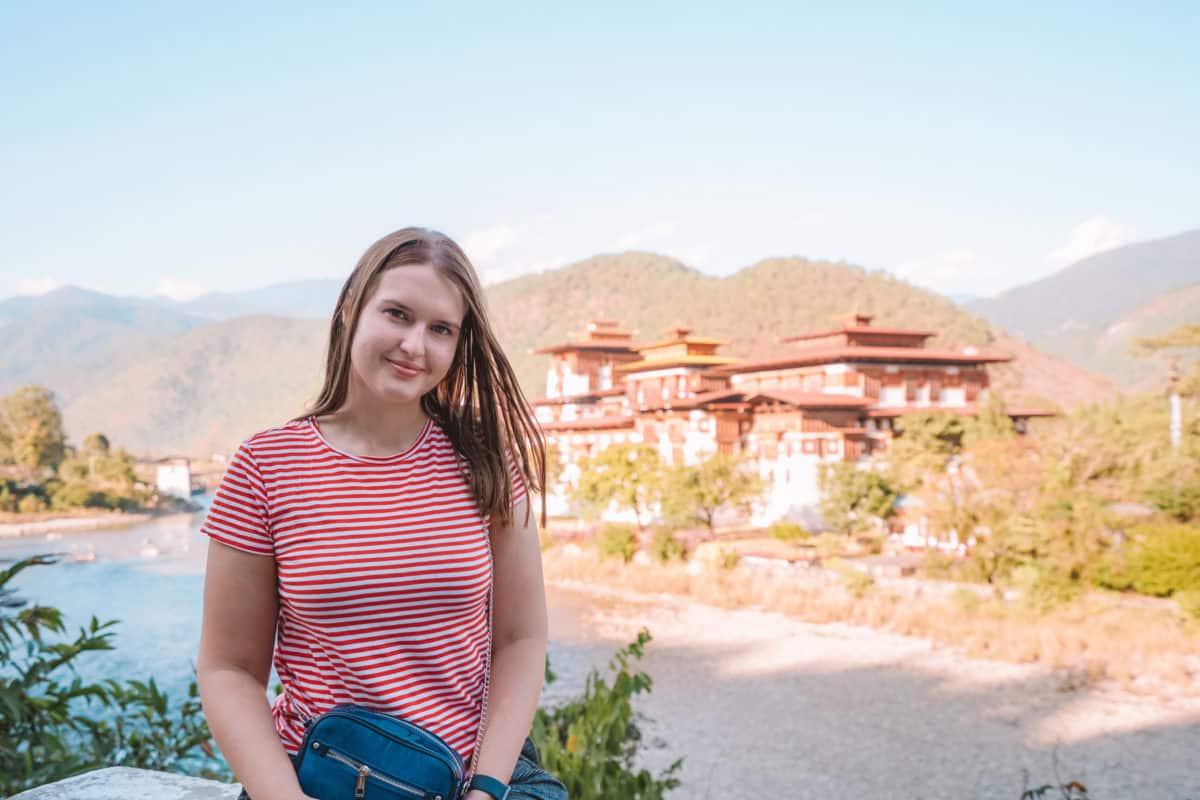
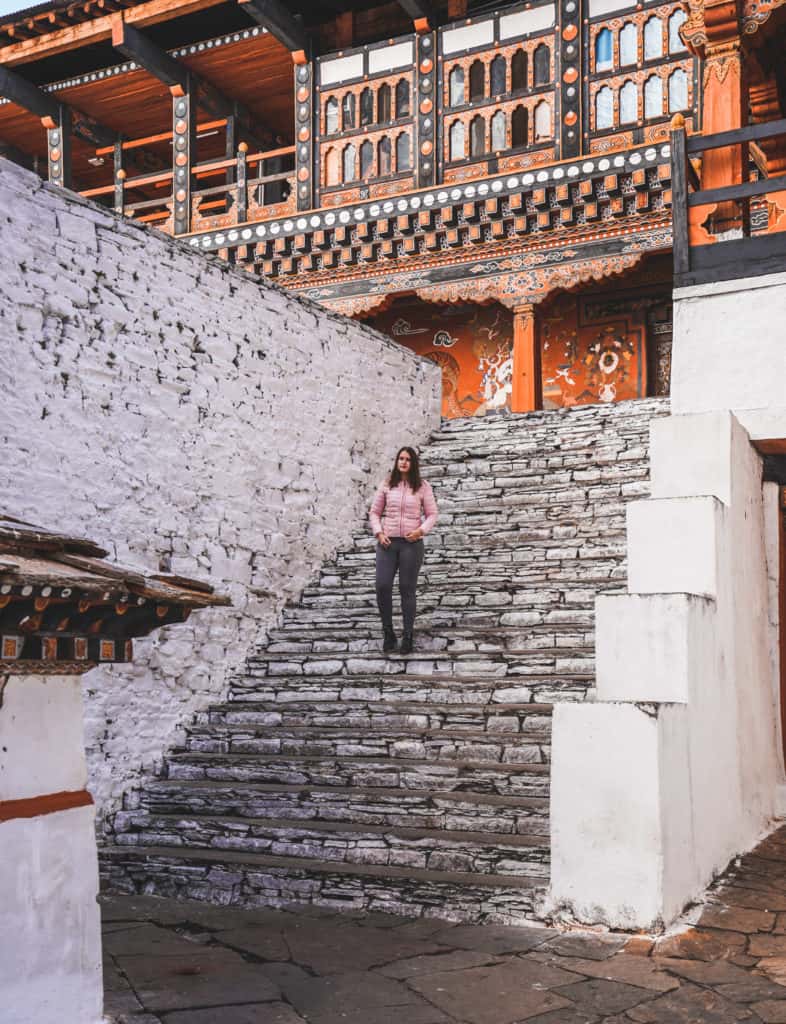
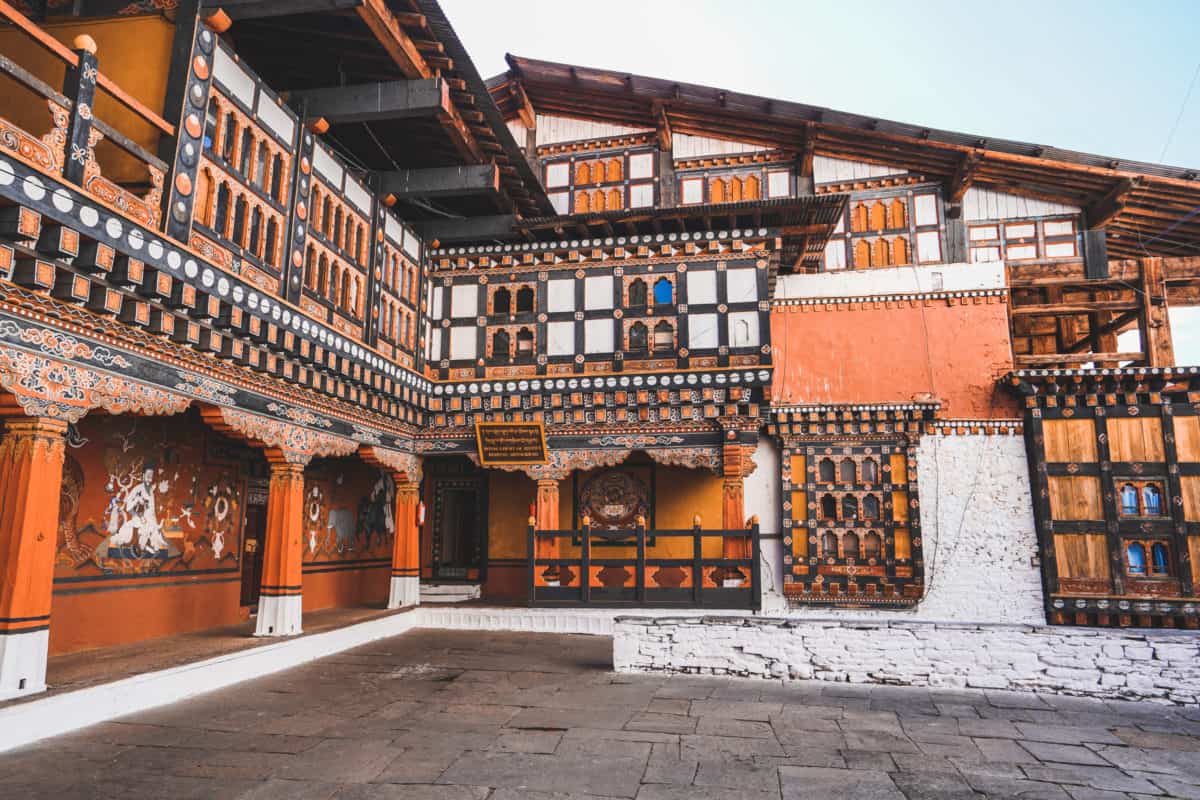
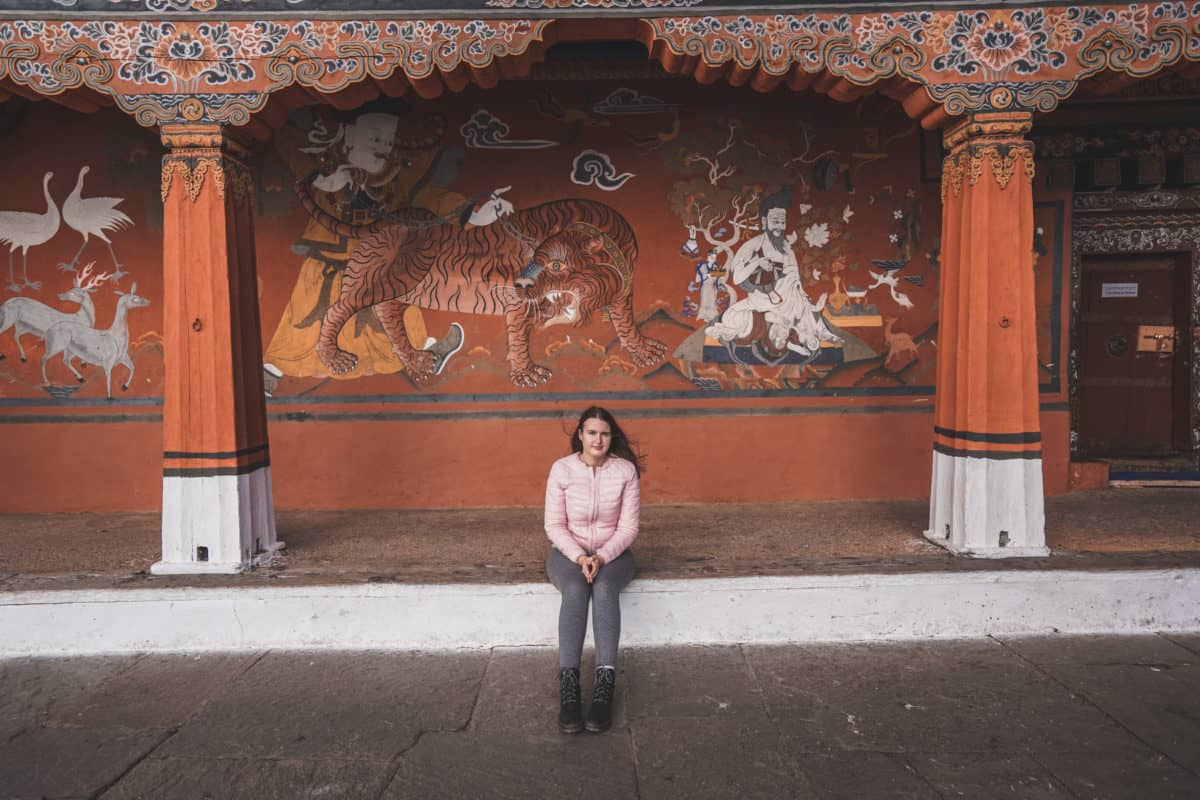
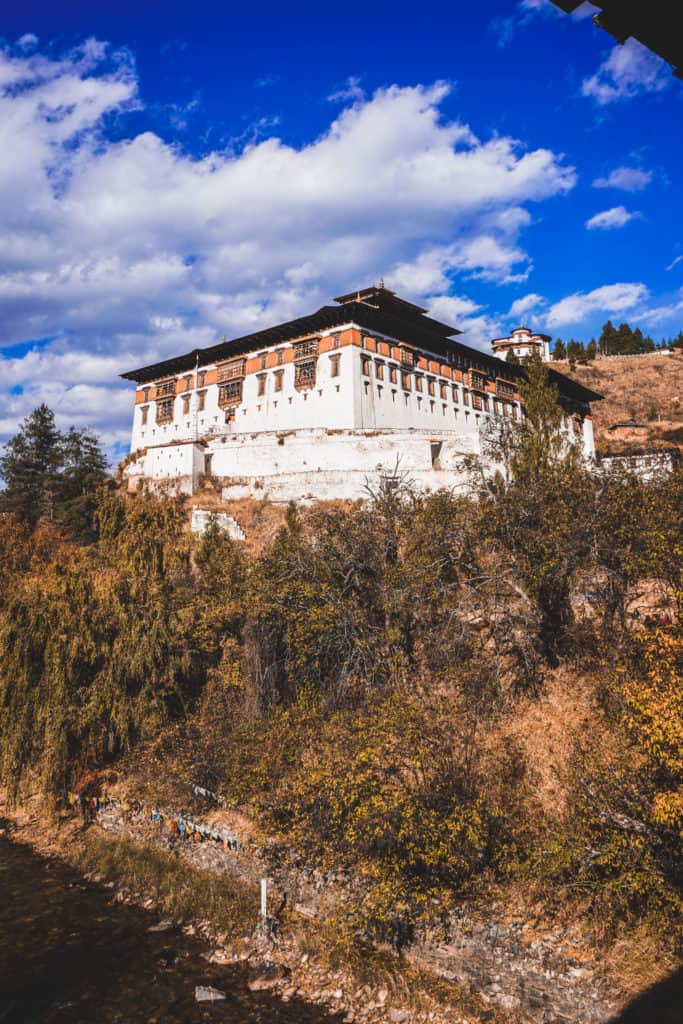
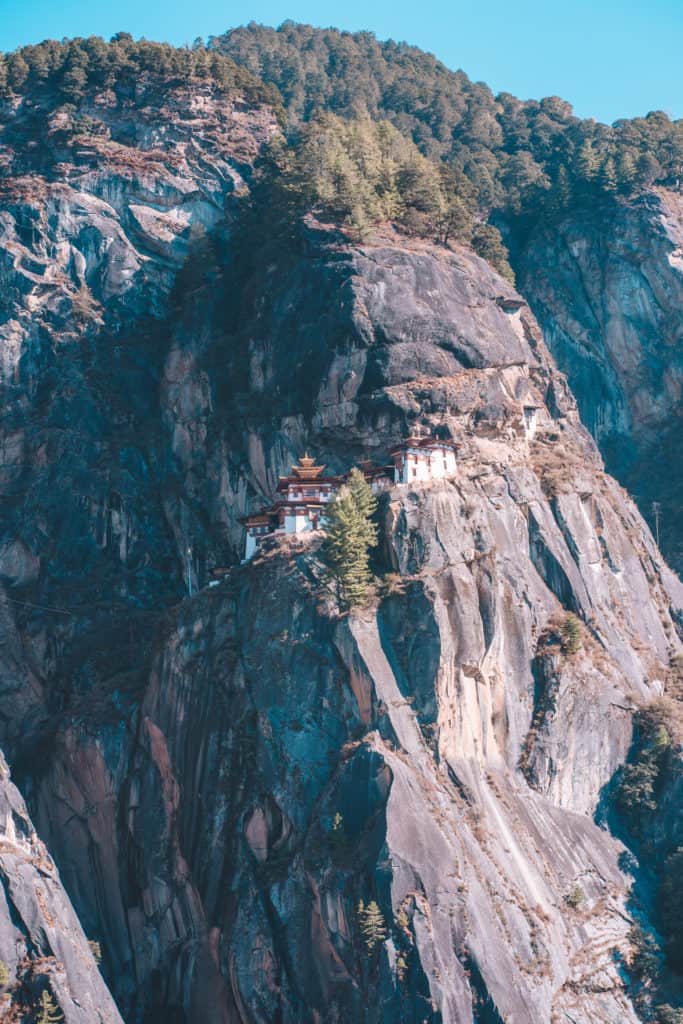
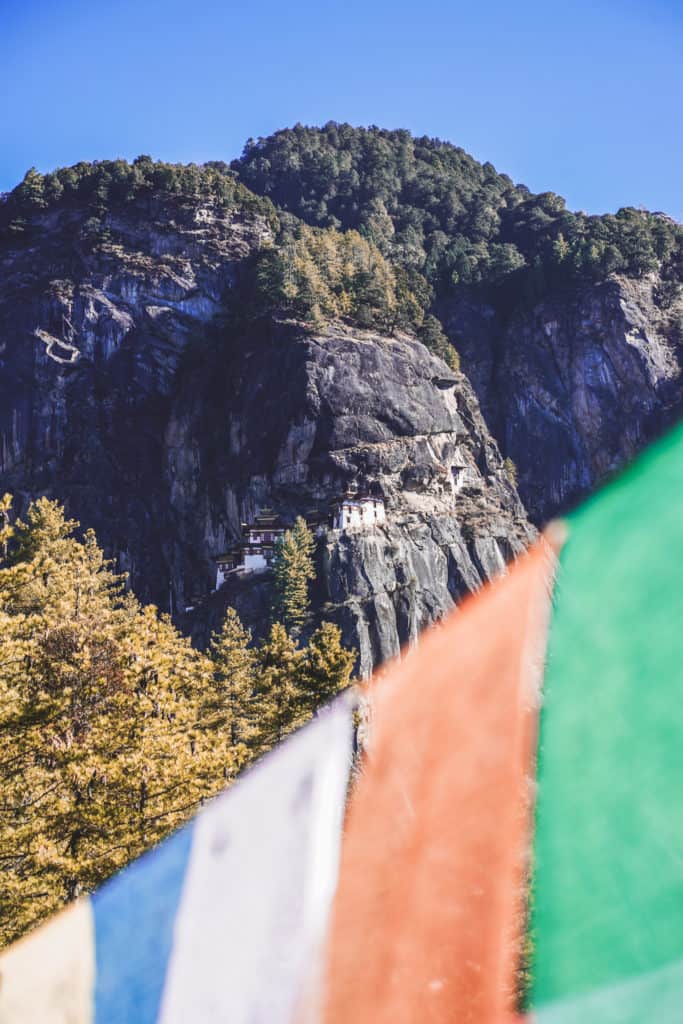
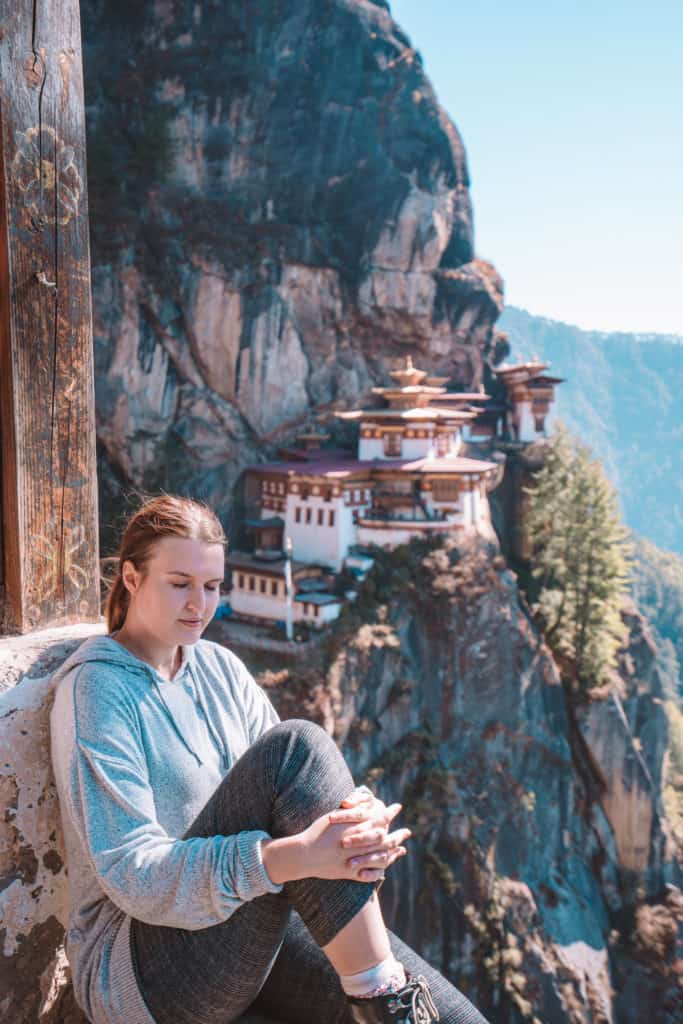
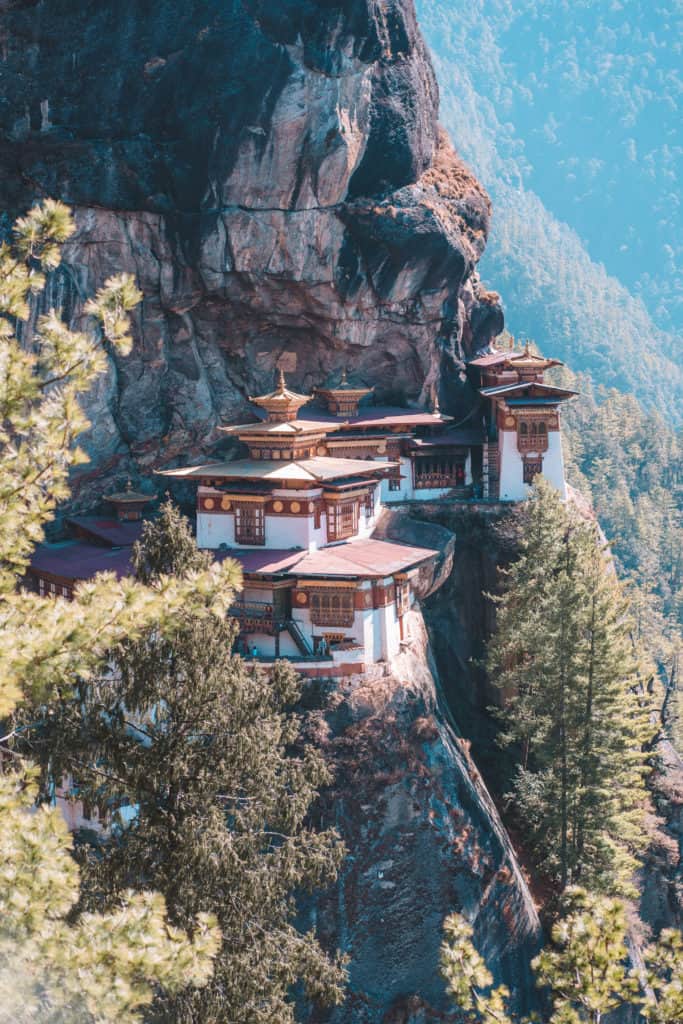
Hola!! muchas gracias por toda informacion, estare en Butan en fines de Diciembre y ya que es muy caro optare por 4 dias tambien.
Saludos , Alejandro de Buenos Aires ,Argentina…
Interested in reading the blog